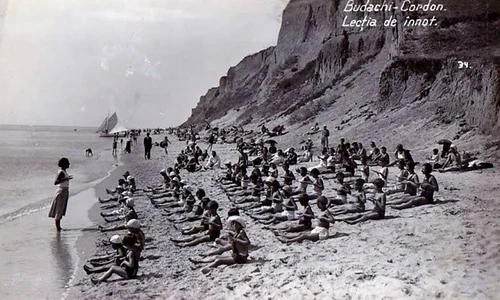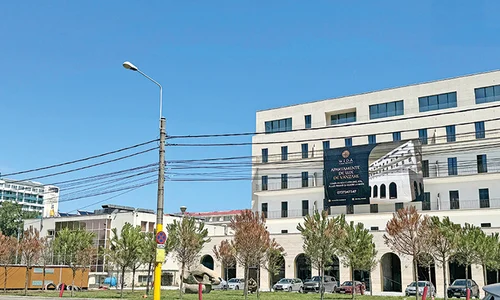
Stalin: Hungary Must Be Punished. Transylvania should be given to Romania
Transylvania enjoyed a very important place in the Soviet policy towards Romania. Besides its immediate significance for the Soviet – Romanian and Soviet – Hungarian relations, Moscow attached a further very important meaning to the solution of the Hungarian – Romanian territorial dispute:an instrument for the consolidation of the Soviet influence in South – East Europe.

It is worth noting that when Molotov and the Hungarian minister in Moscow, Kristoffy, met on June 23rd, 1941, the chief of the Soviet diplomacy declared that “The Soviet Union has no conflict whatsoever with Hungary and claims nothing from Hungary. The Soviet Union does not object to a Hungarian territorial expansion at the expense of Romania.”
The USSR adopted this particular attitude towards Budapest, because it was determined to prevent the Hungarian government from joining the German attack against the Soviet Union. However, on the exact same day of June 23rd, Hungary broke off diplomatic relations with the USSR. Thus, when Hungary declared war on the USSR on June 27th, 1941, Moscow drastically altered its favourable position towards Budapest and its territorial conflict with Romania.
Stalin:“Hungary Must Be Punished”
During the Stalin – Eden meeting from December 16th, 1941, the British Foreign Minister talked about the necessity of a Romanian territorial expansion at Hungary’s expense, in other words, the annulment of the Second Vienna Award. The Soviet dictator said on numerous occasions that Hungary must be punished for its attitude towards the Soviet Union:it entered the war without a real reason to fight against Moscow. In the “About Transylvania” note of June 5th, 1944 from the Litvinov Commission, it was agreed that both Romania and Hungary held convincing claims over Transylvania. Hungary justly demonstrated that over a long period of time – several centuries-Transylvania depended, to a certain extent, politically and spiritually on Hungary. Romania also brought historic arguments to the table by pointing out that Transylvania originated from the Roman province of Dacia where Romans lived from ancient times and where the Hungarians and the Székelys either made inroads on Romanian territory or came later on as colonists.
The note demonstrated that only Romania was able to base its claim on ethnic grounds, since the majority of the population was of Romanian descent. However, a clear ethnic demarcation could not be established, because of the mixing of Hungarian and Romanian populations. The Soviet document also indicated that the Treaty of Trianon was no longer valid and it was impossible politically to continue the enforcing the Second Vienna Award. It was impossible to give Transylvania to Budapest, because “Hungary was the first country which joined the Anti Comintern Pact. It had absolutely no inclination towards a rapprochement with the Soviet Union and all to the contrary, it joined Poland’s every anti-Soviet machination. Without any justification whatsoever, Hungary waged war against the USSR on Germany’s side immediately after Berlin’s attack on the Soviet Union. Hungary did not even try to base its participation to the war on false claims against the USSR as Romania or Poland”.
As far as Romania is concerned, although it is an enemy state which “deserves punishment and not a reward”, it should be given Transylvania. Thus, Romania could be asked for guarantees for a “close and long collaboration with the USSR and its complete renunciation of Bessarabia and Bukovina.” The Soviet note indicated that even before the present war, there were certain political forces in Romania inclined to collaborate with the USSR. “Similarly, if Romania would receive Transylvania, PNŢ led by Maniu could become a close collaborator. Moreover, this collaboration would find many partisans among the Romanian population of Transylvania which would finally be delivered from the nightmare of the Hungarian oppression.”
Transylvania – Separate State
The Commission, however, was rather of the opinion that Transylvania should become an independent state, because “gratitude quickly vanishes and the bitterness of lost territories lasts longer.” Therefore, under these circumstances, the guarantees offered by Romania would be questionable. The existence of an autonomous Transylvanian state, outside any confederations or unions, would serve the Soviet interests very well:“should Transylvania remain as a seed of conflict between the two neighbouring states – Romania and Hungary – it could not exist without the protection of a close powerful state. In this case, the powerful state is the USSR which borders Transylvania. This kind of solution to the problem would be an even better illustration of the principle of self-determination.” It would be even more advantageous, because it would be neither in the favour of Romania, nor Hungary. The Soviet control over the new Transylvanian state would enable the USSR to pressure both Romania and Hungary which would prevent them from joining any kind of anti-Soviet demarches. “This kind of control would consolidate our influence in the Balkans as well and especially over Yugoslavia which borders the Banat”. The existence of a Transylvanian state would be a temporary solution, until Hungary and Romania would be able to ensure a guaranteed collaboration between themselves which would determine the proper decision for Moscow.
Three days later, on June 8th, 1944, the Litvinov Commission reunited to discuss the issue of Transylvania. In the beginning of the debate, Litvinov presented four methods of solving the Transylvanian problem:
1. maintaining the existent situation
2. the union of Transylvania with Hungary
3. the union of Transylvania with Romania
4. the creation of an independent Transylvanian state
The Commission’s lively debates shed light on the advantages and disadvantages of the four solutions for the Soviet interests. The famous Soviet historian Yevgeny Viktorovich Tarle was not present, however, he was appointed expert of the Commission. Therefore, he presented his opinion on the problem of Transylvania which was in the favour of an independent Transylvania:“for us, any other solution is not favourable.” “However, should we have to choose between two bad things, the least bad thing would be to give Transylvania to Romania and to ask her for certain compensations.”
The event of August 23rd, 1944, determined the Soviet leadership to adopt a position in the problem of Transylvania. Ever since the USSR sent Romania the armistice conditions of April 12th, 1944, the Soviet government declared that the Vienna decision of August 30th, 1940 was unjust and expressed its disposition to participate alongside Romania in operations for liberating the Transylvanian territory.
The 19tharticle of the Armistice Convention-signed during the night of 12thand 13thSeptember 1944 – declared the nullity of the Second Vienna Award and demonstrated that “Transylvania (or the major part of its territory) should return to Romania.” USSR wanted to offer Hungary a stimulus, in order to break away from Germany and this explained the reservation to the provision of Transylvania’s restitution to Romania. Should the political forces in Hungary wish to change the Hungarian-Romanian border as set by the Trianon Treaty, then they should clearly be tempted to wage war against Germany, in order to obtain the favours of the Big Three in the Hungarian-Romanian conflict. Yet, this judgment proved to be false, since Horthy himself did not manage to break away from the Reich and on October 15th, 1944, his abortive coup was annihilated by the Germans. Yet, during the years 1945 – 1946, the Hungarian authorities attempted to use for their benefit the following phrase from the Armistice Convention with Romania:“Transylvania (or the major part of its territory).”
Notwithstanding the Litvinov Commission’s recommendations, Stalin constantly believed that Transylvania should be given to Romania. However, the opportunity to use Transylvania as an instrument of pressure on Romania was not lost on Stalin just as Hitler did before him during 1940 – 1944. However, as of now, we do not have documents which would determine a clear explanation of Stalin’s decision of November 14th, 1944:the newly established Romanian authorities were ousted from Northern Transylvania and instead, Soviet administration was installed. When the Romanian government inquired the Allied Control Commission about the decision, Marshal Malinowski explained:“the Armistice Convention provides that the issue of Transylvania should be solved by the Peace Treaty when the major part of Transylvania or Transylvania in its entirety would be reunited with the Romanian state. Therefore, until the Peace Treaty is signed, there is no possibility for a Romanian administration to return to Transylvania.”
However, Marshal Malinowski’s observation would be contradicted by Stalin himself. For him, not the signing of the Peace Treaty, but the establishment of a Communist government would be the moment when a Romanian administration returned to Northern Transylvania. This would happen in March 1945 when Andrey Januarevich Vyshinsky imposed the Petru Groza government in Bucharest.















